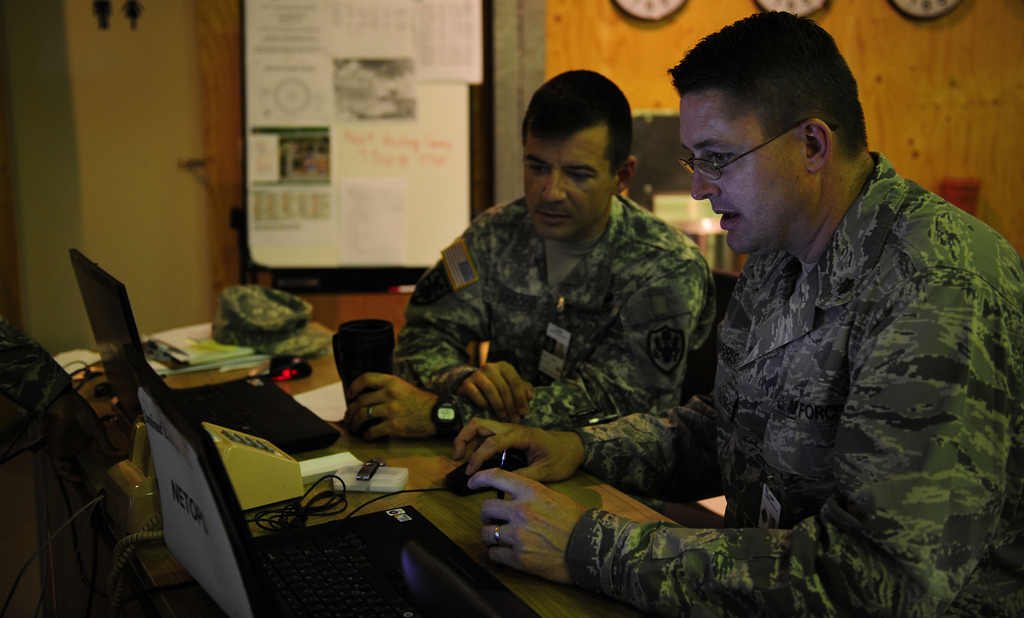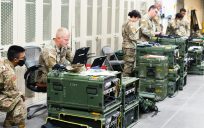This blog post is an excerpt from GovLoop’s recent guide DoD in Transition. Download the full guide here.
Threats to our nation no longer come only from air, land, and sea. New threats come from cyberspace, too. Yet DoD’s technology, workforce, and operations continue to be honed for traditional concepts of war and security. To address rapidly changing internal and external vulnerabilities, the department must innovate in these areas.
Technology
When people think of DoD technology, they often think of the cutting-edge weapons designed in DARPA’s secret confines. And although those tools may be leading the battlefield, other technologies aren’t being created or deployed as quickly at DoD. “There is a need to improve organizational innovation, though not necessarily the battlefield innovation,” said Marine Corps Capt. Chris Wood.
But just how will the department engender and leverage the next generation of technologies? DIUx, announced in August 2015, is the flagship program to take the best from private industry and quickly deploy it within DoD. It brings together contractors, small businesses, and other corporations to discuss DoD’s pressing technological needs in real time.
According to the latest update from the department, the initiative has resulted in 22 pilot programs with industry partners. Those programs tackle an array of innovation ideas including dynamic network mapping and lean startup methodologies, in addition to discrete technology needs such as endpoint protection through micro-virtualization and automated textual analysis and content curation.
The investment in these internal programs signifies a change in mindset for DoD. Although the department has always heavily invested in traditional research and development projects, leaders are recognizing that truly innovative technology cannot be created without first addressing deeper structural and cultural barriers to innovation.
Workforce
Wood explained the importance of workforce to innovation: “I began to research what innovation really looks like, particularly from a corporate perspective and from a Silicon Valley perspective,” he said. “In doing that, you find out that it really is all about the people. It’s not about the technology or even the ideas. It’s about having the right person to drive that change — to be the change agent, to be passionate and to be persistent.”
To recruit and retain those change-makers, DoD must revamp the way it hires and incentivizes its employees. Specifically, it needs to make benefits compelling enough to recruit those innovators who might otherwise choose better-paying jobs in the private sector. But as Lt. Gen. David Barno, retired Senior Commander of U.S. and coalition forces in Afghanistan from 2003 to 2005, noted, “The current system doesn’t understand the concept of a war for talent.”
“We’re dealing with an Industrial Age personnel system that’s institutionalized in statute with the Defense Office of Personnel Management Act,” he continued. “It is not designed to focus on the individual. It’s designed to meet the needs of the institution, and it really hasn’t been brought up-to-date with any of the modern ways of thinking about how to manage talent.”
Thankfully, reforms coming from the Force of the Future initiative are starting to change personnel practices. “These are incremental improvements that are designed to make the department more effective at recruiting the millennial generation and the post-millennial generation,” Marcuse said. “They will bring the department up to speed on the way the strategic environment is shifting, but also the way the workforce is shifting.”
Finally, DoD is seeking new ways to expand recruitment opportunities while diminishing recruitment timelines. “We’re really trying to find ways to create a pipeline for the best and brightest young Americans to serve as civilians,” he said.
Operations
To support that constant evolution of innovation, DoD’s project management strategies must become more adaptive. This isn’t a new realization. In fact, the 2010 Defense Authorization Act called for an agile IT acquisition process that included “early and continual involvement of the user; multiple, rapidly executed increments or releases of capability; early, successive prototyping to support an evolutionary approach; and a modular, open-systems approach.”
But despite that call, progress on operationalizing innovation has been minimal, according to some. “We have no problem with DIUx, but we have a serious, serious problem with the contracting officers and with the purchasing process and the acquisition process,” John DeSantis, Chief Executive Officer of security software company HyTrust, said in a statement regarding innovation initiatives at DoD.
Procurement procedures continue to be the biggest impediment to innovation at DoD. Even the Air Force’s Office of Transformational Innovation can boast only an incremental procurement cycle of six months — far longer than private sector goals of one to two weeks.
Moving forward, department leaders are hoping to correct this issue in two ways. The first is by leveraging existing flexible contracting vehicles — particularly the “other transaction authority” (OTA) capability — to procure a more diverse array of tools, more quickly.
Second, many internal departments are trying to empower lower-level staff to make innovation and procurement decisions. “Bureaucratizing innovation is possible,” Maj. Krieger explained. It simply requires allowing more staff to make quicker decisions using more agile procurement methods.
Nevertheless, many departments still struggle to engrain innovation goals into their procurement procedures. We can expect to see an even more concerted effort in the future, particularly from the House and Senate Armed Services committees, to overcome this obstacle with operational and legislative reform.





Leave a Reply
You must be logged in to post a comment.